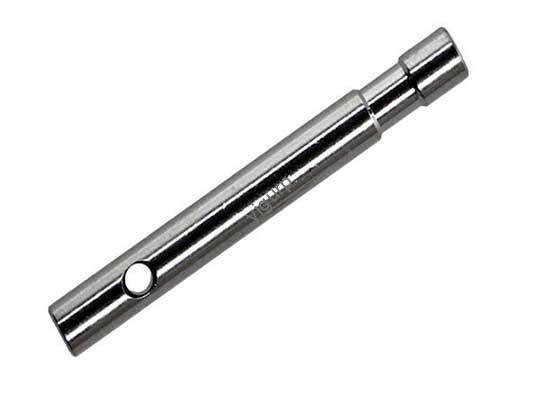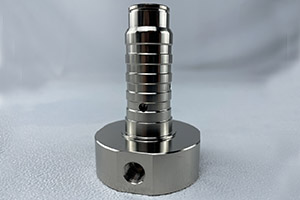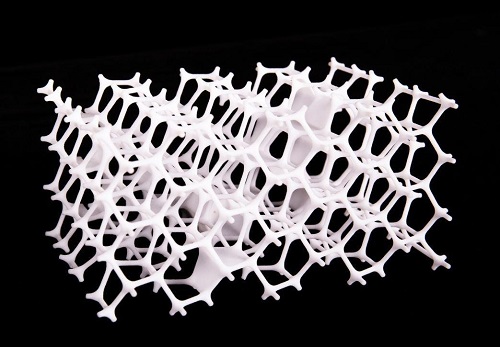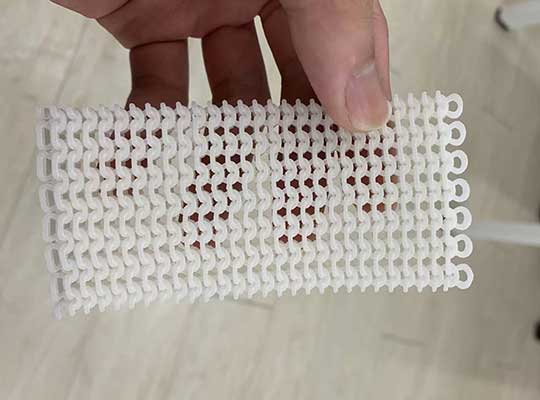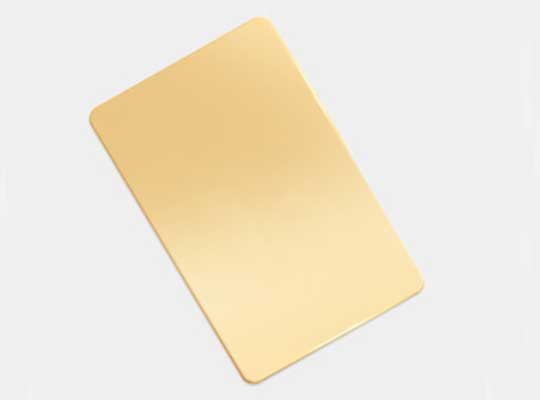In the world of industrial fasteners, 316 stainless steel threaded rod stands out as a premium choice for demanding applications. Its unique combination of corrosion resistance, 強さ, and versatility makes it indispensable across various industries. Whether you’re working in marine environments, chemical processing plants, or medical facilities, understanding the properties and applications of 316 stainless steel threaded rod can help you make informed decisions for your projects. This comprehensive guide will delve into everything you need to know about this exceptional fastener.
Material Properties of 316 ステンレス鋼のねじ付きロッド
316 stainless steel is a molybdenum – bearing austenitic chromium – nickel stainless steel that offers superior performance compared to other stainless steel grades. Here are its key material properties:
Chemical Composition
The chemical makeup of 316 stainless steel is what gives it its remarkable characteristics. It typically contains:
- 16 – 18% クロム, which forms a passive oxide layer on the surface, providing excellent corrosion resistance.
- 10 – 14% ニッケル, which enhances the alloy’s ductility and toughness, allowing it to be easily formed and shaped.
- 2 – 3% モリブデン, a crucial element that significantly improves resistance to pitting and crevice corrosion, especially in chloride – rich environments.
- 2% maximum manganese, which helps in deoxidizing the steel and improving its mechanical properties.
- 0.08% maximum carbon, to maintain the steel’s corrosion resistance and weldability.
- 0.75% maximum silicon, which aids in the manufacturing process and contributes to the steel’s strength.
機械的特性
When it comes to mechanical performance, 316 stainless steel threaded rod doesn’t disappoint:
- Tensile strength: 515 MPA (74,700 psi) minimum. This means it can withstand a significant amount of pulling force before breaking.
- Yield strength: 205 MPA (29,700 psi) minimum. It indicates the stress at which the material begins to deform permanently.
- Elongation: 40% minimum in 50 mm. This shows the material’s ability to stretch before fracturing, making it suitable for applications where some flexibility is needed.
- 硬度: 95 HRB maximum on the Rockwell B scale, ensuring it has good wear resistance.
Corrosion Resistance
One of the most notable advantages of 316 stainless steel threaded rod is its exceptional corrosion resistance. It outperforms 304 ステンレス鋼, especially in harsh environments. It is highly resistant to:
- Saltwater corrosion, making it ideal for marine applications such as boatbuilding, offshore oil rigs, and coastal infrastructure.
- Chemical corrosion from acids, アルカリ, and organic solvents, which is essential in chemical processing plants, pharmaceutical manufacturing, and laboratories.
- Pitting and crevice corrosion, which can occur in areas where moisture and contaminants are trapped, thanks to the presence of molybdenum.
Specifications and Sizing of 316 ステンレス鋼のねじ付きロッド
Understanding the specifications and sizing of 316 stainless steel threaded rod is crucial for selecting the right fastener for your project.
Thread Types
316 stainless steel threaded rod is available in various thread types to suit different applications:
- Metric threads: These are commonly used in international industrial applications. They are designated by their diameter and pitch, such as M8 x 1.25, where M8 is the diameter and 1.25 is the pitch in millimeters.
- Unified National Coarse (UNC) スレッド: These are widely used in the United States for general – purpose applications. They have a larger thread pitch, providing better holding power in softer materials. Examples include 1/4 – 20, where 1/4 is the diameter in inches and 20 is the number of threads per inch.
- Unified National Fine (UNF) スレッド: They have a smaller thread pitch than UNC threads, offering better resistance to vibration loosening. They are often used in precision applications, のように 1/4 – 28.
Diameter and Length Options
316 stainless steel threaded rod comes in a range of diameters and lengths to meet diverse project requirements:
- Diameters typically range from 1/4 inch (6.35 mm) まで 2 インチ (50.8 mm) それ以上, depending on the manufacturer and application.
- Lengths can vary from a few inches to 10 足 (3.05 meters) or longer. Custom lengths are also available for specific projects.
公差
Tolerances play a vital role in ensuring the proper fit and function of 316 stainless steel threaded rod. The ISO and ASME standards specify tolerances for diameter, thread pitch, and straightness. 例えば, the diameter tolerance for metric threaded rod is often within ±0.01 mm, ensuring consistent performance when mating with nuts and other components.
Applications of 316 ステンレス鋼のねじ付きロッド
The unique properties of 316 stainless steel threaded rod make it suitable for a wide range of applications across various industries.
Marine Industry
In the marine industry, where exposure to saltwater is constant, 316 stainless steel threaded rod is a go – to fastener. It is used in:
- Boatbuilding for securing hull components, decks, and fittings. Its corrosion resistance ensures that the fasteners won’t deteriorate quickly in the harsh marine environment.
- Offshore structures such as oil platforms, wind turbines, and buoys. These structures are constantly exposed to salt spray and seawater, そして 316 stainless steel threaded rod provides long – term reliability.
- Marine equipment like pumps, バルブ, and propeller systems. It helps keep these critical components securely fastened, even in the presence of water and salt.
Chemical Processing
Chemical processing plants deal with a wide range of corrosive substances, making 316 stainless steel threaded rod an essential component:
- It is used in the construction of chemical storage tanks, where it secures the tank walls, lids, and internal components. The corrosion resistance of 316 stainless steel prevents leaks and ensures the integrity of the tanks.
- Piping systems in chemical plants rely on 316 stainless steel threaded rod to connect pipes, バルブ, and fittings. It can withstand the corrosive effects of the chemicals flowing through the pipes.
- Reactors and other processing equipment use 316 stainless steel threaded rod to hold components together, ensuring safe and efficient operation.
Medical and Pharmaceutical
In the medical and pharmaceutical industries, cleanliness, 耐食性, and biocompatibility are of utmost importance. 316 stainless steel threaded rod is used in:
- Medical devices such as surgical instruments, imaging equipment, and patient beds. It is easy to clean and sterilize, and its corrosion resistance ensures that it won’t contaminate the medical environment.
- Pharmaceutical manufacturing equipment, including mixing tanks, conveyors, and packaging machinery. It meets the strict hygiene standards required in the production of drugs and pharmaceuticals.
Food Processing
The food processing industry requires fasteners that are corrosion – resistant and easy to clean to maintain food safety. 316 stainless steel threaded rod is used in:
- Food processing machinery, such as mixers, グラインダー, and conveyors. It can withstand frequent cleaning with water and cleaning agents without corroding.
- Storage tanks and equipment used for handling food products. It ensures that there is no contamination of the food from the fasteners.
Architectural and Construction
In architectural and construction applications, 316 stainless steel threaded rod offers both functionality and aesthetics:
- It is used in curtain wall systems to secure glass panels and other facade components. Its corrosion resistance ensures that the curtain wall remains strong and attractive for years, even in harsh weather conditions.
- Structural supports, such as in bridges and buildings, 使用 316 stainless steel threaded rod for its strength and durability. It can withstand heavy loads and resist corrosion from environmental factors.
Installation and Fastening Techniques for 316 ステンレス鋼のねじ付きロッド
Proper installation is essential to ensure the performance and longevity of 316 stainless steel threaded rod.
Tools Required
To install 316 stainless steel threaded rod, you will need the following tools:
- Wrenches: Adjustable wrenches or socket wrenches are used to tighten nuts onto the threaded rod. Make sure the wrenches are the correct size for the nuts to avoid damaging them.
- Thread lubricant: Using a thread lubricant, such as anti – seize compound, can make installation easier and prevent galling. Galling is a form of wear that occurs when metal surfaces slide against each other under pressure, which can damage the threads.
- Cutting tools: If the threaded rod needs to be cut to a specific length, a hacksaw, bandsaw, or pipe cutter can be used. Ensure that the cut is straight to ensure proper mating with nuts and other components.
- Deburring tool: After cutting, use a deburring tool to remove any burrs from the end of the threaded rod. Burrs can damage threads or cause injury during installation.
Installation Steps
Follow these steps for proper installation of 316 stainless steel threaded rod:
- Prepare the surface: Ensure that the surface where the threaded rod will be installed is clean and free of debris, rust, or other contaminants. This will ensure a good connection.
- Apply thread lubricant: Apply a small amount of thread lubricant to the threads of the rod and the nuts. This reduces friction during installation and helps prevent galling.
- Insert the threaded rod: Insert the threaded rod into the pre – drilled hole or through the components to be fastened. Make sure the rod is aligned correctly.
- Tighten the nuts: Use a wrench to tighten the nuts onto the threaded rod. Tighten them to the recommended torque specification, which can be found in engineering handbooks or provided by the manufacturer. 以上 – tightening can damage the threads or the components being fastened, while under – tightening can result in a loose connection.
- Check for tightness: After installation, check the nuts to ensure they are tight. If necessary, re – tighten them to the correct torque.
Torque Specifications
Torque specifications for 316 stainless steel threaded rod vary depending on the diameter and thread type. Here is a general guide for UNC threads:
| Diameter (inch) | Torque (ft – lbs) |
| 1/4 | 10 – 15 |
| 3/8 | 25 – 35 |
| 1/2 | 50 – 70 |
| 5/8 | 90 – 120 |
| 3/4 | 150 – 200 |
It’s important to note that these are general guidelines, and the specific torque requirement may vary based on the application and the manufacturer’s recommendations. Always refer to the appropriate specifications for your project.
Maintenance and Care of 316 ステンレス鋼のねじ付きロッド
Proper maintenance and care can extend the lifespan of 316 stainless steel threaded rod and ensure its continued performance.
クリーニング
Regular cleaning is essential to remove dirt, grime, and contaminants that can affect the corrosion resistance of the threaded rod. Use a mild detergent and warm water to clean the surface. Avoid using abrasive cleaners or steel wool, as they can scratch the surface and remove the passive oxide layer, which protects the steel from corrosion. After cleaning, rinse thoroughly with clean water and dry with a soft cloth.
潤滑
Lubricating the threads of 316 stainless steel threaded rod can help prevent galling and make future disassembly easier. Apply a thin layer of anti – seize compound or a suitable lubricant to the threads periodically, especially in applications where the rod is exposed to moisture or high temperatures.
Inspection
Regular inspection is important to detect any signs of damage or corrosion early. Check the threaded rod for:
- Rust or corrosion spots. If any are found, clean the area and apply a corrosion – resistant coating if necessary.
- Damaged threads, such as stripping or bending. Damaged threads can affect the performance of the fastener and may need to be repaired or replaced.
- Loose nuts. If nuts are loose, tighten them to the recommended torque.
ストレージ
When storing 316 stainless steel threaded rod, keep it in a dry, clean environment. Avoid exposure to moisture, salt, and other corrosive substances. Store the rod in a rack or container to prevent bending or damage. If the rod is not going to be used for an extended period, apply a protective coating, such as oil or a rust inhibitor, to prevent corrosion.
Comparison with Other Fasteners
316 stainless steel threaded rod has unique characteristics that set it apart from other fasteners. Let’s compare it with some common alternatives:
316 Stainless Steel Threaded Rod vs. 304 ステンレス鋼のねじ付きロッド
Both 304 そして 316 stainless steel are popular choices for threaded rod, but there are key differences:
- Corrosion resistance: 316 stainless steel offers superior corrosion resistance, especially in chloride – rich environments. 304 stainless steel is more susceptible to pitting and crevice corrosion in such conditions.
- Molybdenum content: 316 stainless steel contains molybdenum, which 304 stainless steel does not. This makes 316 more resistant to corrosion.
- 料金: 316 stainless steel is generally more expensive than 304 stainless steel due to its higher alloy content.
- アプリケーション: 304 stainless steel is suitable for general – purpose applications in mild environments, その間 316 is better suited for harsh environments such as marine, chemical, and medical applications.
316 Stainless Steel Threaded Rod vs. Carbon Steel Threaded Rod
Carbon steel threaded rod is a more economical option, but it has significant limitations compared to 316 ステンレス鋼:
- Corrosion resistance: Carbon steel is prone to rust and corrosion, especially in moist or corrosive environments. It requires a protective coating, such as zinc plating, to improve its corrosion resistance, but this coating can wear off over time. 316 ステンレス鋼, 一方で, has inherent corrosion resistance.
- 強さ: While carbon steel has good strength, it is not as resistant to corrosion – related degradation as 316 ステンレス鋼. In corrosive environments, carbon steel threaded rod can weaken over time, leading to failure.
- アプリケーション: Carbon steel threaded rod is suitable for indoor, dry applications where corrosion is not a concern. 316 stainless steel is better for outdoor, marine, or chemical – exposed applications.
316 Stainless Steel Threaded Rod vs. Alloy Steel Threaded Rod
Alloy steel threaded rod is designed for high – strength applications, but it differs from 316 stainless steel in several ways:
- Corrosion resistance: Alloy steel is not as corrosion – resistant as 316 ステンレス鋼. It may require coatings or plating to resist corrosion, which adds to the cost and maintenance requirements.
- 強さ: Alloy steel typically has higher tensile strength than 316 ステンレス鋼, making it suitable for applications where high strength is the primary requirement, such as in heavy machinery and structural engineering.
- 料金: Alloy steel threaded rod can be more expensive than 316 stainless steel in some cases, depending on the alloy composition.
- アプリケーション: Alloy steel is used in high – stress applications where strength is critical, その間 316 stainless steel is preferred in corrosive environments where both strength and corrosion resistance are needed.
Sourcing and Suppliers of 316 ステンレス鋼のねじ付きロッド
When sourcing 316 stainless steel threaded rod, it’s important to choose a reliable supplier to ensure quality and consistency.
Key Factors to Consider When Choosing a Supplier
- Quality certifications: Look for suppliers who can provide quality certifications, such as ISO 9001, to ensure that their products meet international quality standards.
- Material traceability: A good supplier should be able to provide material traceability, including information about the origin of the steel, chemical composition, and mechanical properties. This is important for ensuring the quality and performance of the threaded rod.
- Product range: Choose a supplier that offers a wide range of 316 stainless steel threaded rod sizes, thread types, and lengths to meet your specific needs.
- Customer service: A supplier with good customer service can provide technical support, answer your questions, and help you select the right product. They should also be responsive to orders and inquiries.
- Pricing: While price is an important factor, it should not be the only consideration. Compare prices from different suppliers, but also consider the quality and service they offer.
Common Suppliers
Some well – known suppliers of 316 stainless steel threaded rod include:
- Fastenal: A leading distributor of industrial fasteners with a wide range of products and locations across the globe. They offer quality 316 stainless steel threaded rod and provide excellent customer service.
- McMaster – Carr: A supplier of industrial and maintenance products, including a variety of stainless steel threaded rod options. They are known for their fast delivery and extensive product catalog.
- Grainger: A large distributor of industrial supplies, offering 316 stainless steel threaded rod in various sizes and specifications. They have a strong reputation for quality and reliability.
- Local industrial fastener suppliers: Many local suppliers specialize in fasteners and can provide personalized service and quick delivery.
